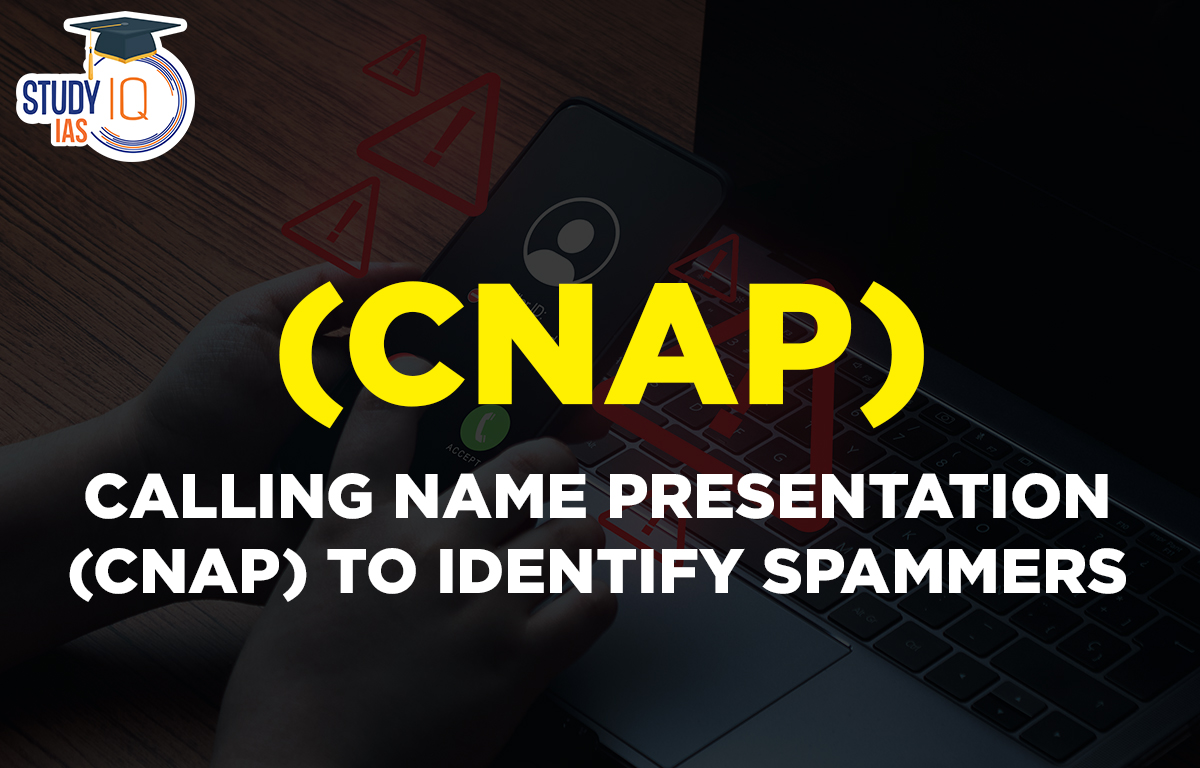Table of Contents
About Calling Name Presentation (CNAP)
Calling Name Presentation (CNAP) would provide the called individual with information about the calling party (similar to ‘Truecaller’ and ‘Bharat Caller ID & Anti-Spam’).
Aim: To ensure that telephone subscribers are able to make an informed choice about incoming calls and curb harassment by unknown or spam callers.
TRAI has proposed four models for facilitating the Calling Name Presentation (CNAP) mechanism:
- First Model: It involves each telecom service provider (TSP) establishing and operating a CNAP database of its subscribers.
- Here, the caller’s TSP would have to extract the relevant data from its own database.
- This would then be sent to the potential receiver’s TSP to be presented to the final user.
- Second Model: Operator of the calling entity shares its CNAP database with the receiver’s operator.
- Here the calling operator would permit the receiver’s operator to access its database for the caller’s CNAP data.
- Operators could also use their respective mobile number portability databases.
- Third Model: It envisages a third party operating a centralised database.
- The onus rests on the receiver’s operator to delve into the centralised database to retrieve and present the caller’s data.
- It would require that TSPs inform the database while enrolling new subscribers or deactivating existing ones.
- This model is similar to a plan envisaged by the Department of Telecommunications (DoT) in 2018, involving the setting up of a Digital Intelligence Unit at the central level and Telecom Analytics for Fraud Management and Consumer Protection (TAFCOP) for every licensed operating area.
- Fourth Model: It would require that each TSP maintain a CNAP database and retain a copy of a synchronized central database operated by a third party.
- Mechanism: Call is facilitated as per the routine procedure, and since the receiver’s operator has access to both the centralized and their own database, the lookup is, therefore, internal.
Read about: Gasht-e Ershad
Need of CNAP
- India is currently the world’s second-largest telecommunications market.
- There were 114.55 crore wireless subscribers and 2.65 crore wireline subscribers in the country as on 30 September 2022.
- Under the current technology, the potential receivers do not get the name and identity of the caller entity.
- There are a rising concerns about robocalls (calls made automatically using IT-enabled systems with a pre-recorded voice), spam calls and fraudulent calls.
- According to LocalCircles’ survey, 64% of respondents stated that they receive at least 3 spam calls each day, with 95% of respondents receiving them despite registering on Do-not-Call Directory (DND).
- According to Truecaller’s ‘2021 Global Spam and Scam Report’, average number of spam calls per user each month (in India) stood at 16.8 while total spam volumes received by its users were in excess of 3.8 billion in calls in October alone.
- Genuine calls being unanswered in the impression of unsolicited commercial communication from unregistered telemarketers.
- Smartphone users, at present, rely on in-built features (such as ‘silence unknown numbers’ on Apple phones) or third-party apps to mark and tackle spam calls.
- However, as per the regulator, crowd-sourced data may not be reliable.
Read about: Postal Ballot
Concerns with CNAP
- Latency in Call: TRAI noted that there is a likelihood of a slight increase in the time taken to set up a call with respect to certain models.
- Responsiveness might suffer when moving from a faster wireless network (4G or 5G) to a comparatively slower one (2G or 3G), or vice-versa.
- Privacy: According to a Senior Researcher at the Centre for Internet and Society (CIS), there is a lack of clarity about how CNAP mechanism would balance the caller’s right to remain anonymous, an essential component of the right to privacy.
- Fake Calls: Circumventing provision by calling up potential customers as a personal call.
- Previously, telemarketers were required to be registered as promotional numbers, making it easier to identify and block them.
Read about: eSanjeevani OPD
Way Forward
- Build an interface that is user-friendly and in turn, an effective mechanism.
- Active participation from the subscribers would ensure that spammers are rightly identified and are unable to make further calls.
- Government must invest in digital literacy, skilling citizens to navigate and use the tech better, ensuring they do not share their data indiscriminately and are informed about dangers such as financial frauds and spoofing.
Telecom Regulatory Authority Of India (TRAI)
- It is a statutory body, established in 1997, by the Telecom Regulatory Authority of India Act, 1997.
- It is mandated to regulate the telecommunication services, protect the interests of service providers and consumers of the telecommunication sector, and promote and ensure orderly growth of the telecommunications sector in the country.


 Daily Quiz 01 July 2025
Daily Quiz 01 July 2025
 China, Pakistan and Bangladesh Trilatera...
China, Pakistan and Bangladesh Trilatera...
 US Pulls Funding from GAVI-Global Vaccin...
US Pulls Funding from GAVI-Global Vaccin...





















